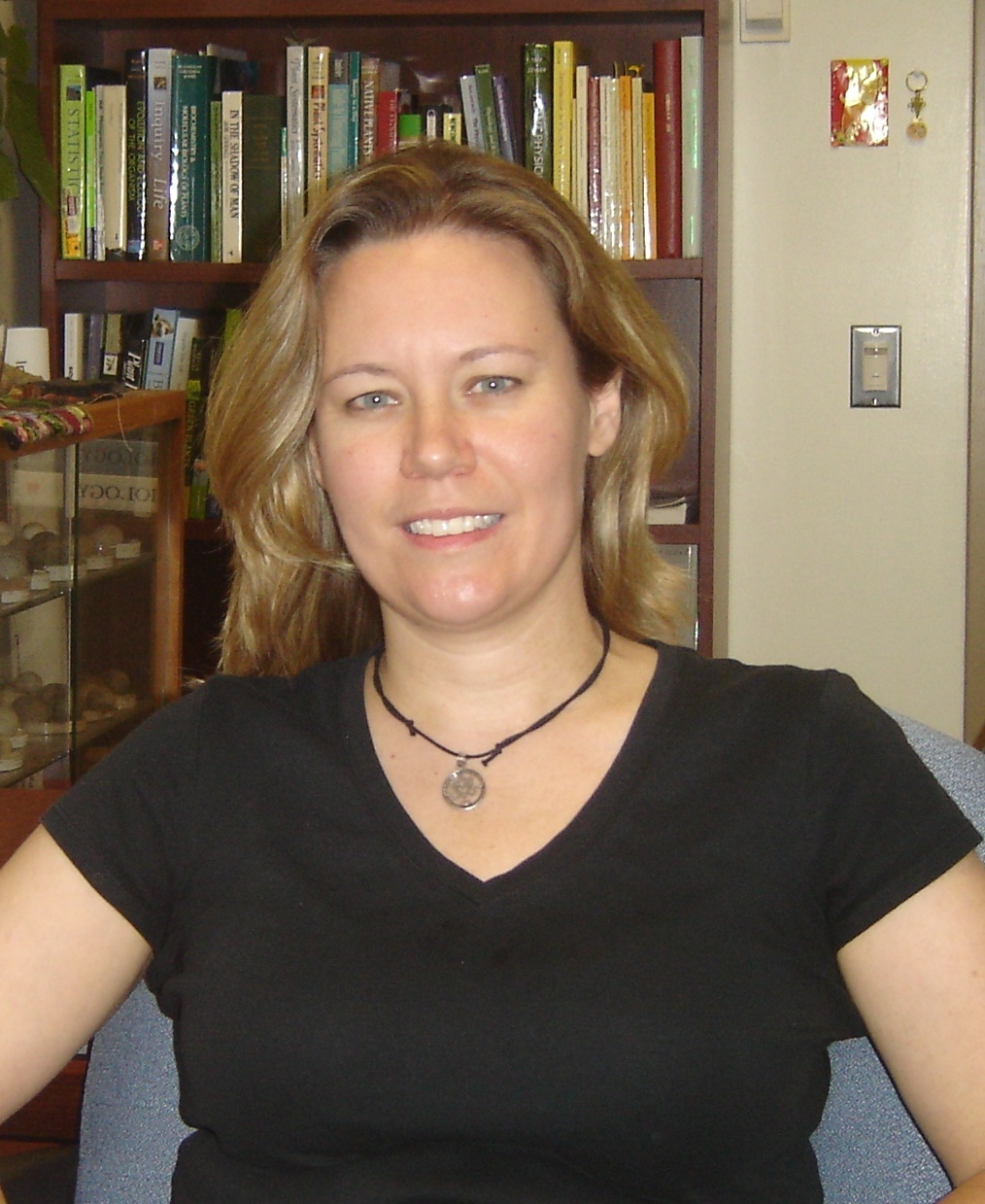Katherine R. Goodrich, Ph.D.
|
Research Interests |
Background |
Home Page |
Overall research interests:Plant-insect interactions are incredibly diverse, and can largely be divided into interactions where plants co-opt insects as pollen vectors (for plant reproduction) and interactions where insects utilize plants as food sources and brood sites. Frequently these two sets of interactions are interrelated. I find it important to consider (1) insect perception of plant cues such as scent, color, shape and texture, and (2) the multiple contexts in which plant cues, especially scent, may be used by the insect community. Specifically, I am interested in ecological (multi-trophic) interactions related to floral and vegetative scents, and how plant-to-insect olfactory signals function in concert with visual and/or tactile plant cues.My research interests are easily translated into field-based studies of plant morphology and scent chemistry, lab- or field-based insect behavioral assays and pollination studies. The results of these studies can be placed into evolutionary contexts with lab-based molecular systematic studies. These studies allow me to participate in current debates over specialized vs. generalized pollination strategies, the role of ethological isolation in angiosperm speciation, and the co-evolution of insect and plant physiology. |
Plant reproduction and pollination strategies:In order to better comprehend the tremendous diversity of present-day flowering plants, I seek to understand mechanisms behind their diversification. Specifically, I seek examples of closely related plant taxa which may still be undergoing processes of speciation. I then examine specific mechanisms such as pollination strategy, which may contribute to reproductive isolation between these closely-related plant taxa. Current lab projects focus on the genera Asimina and Deeringothamnus (Annonaceae), in collaboration with Catherine Bush, Ph.D. (Valdosta State University). New projects on local floral are also being developed.For more information on my on-going and new projects related to plant reproduction and pollination strategies, click here. |
Neotropical Annonaceae:I am currently collaborating with Lars Chatrou (Wageningen University, Netherlands) in a study of Annonaceae in Costa Rica and Peru. I am assisting with the M.Sc. thesis project of Jeike van de Poel, examining niche evolution for several species of Annonaceae in Costa Rica.For more information on my on-going and new projects related to Neotropical Annonaceae, click here. |
Herbivore-host plant associations:I am collaborating with Janice Krumm, Ph.D., and students Kelly Hy (’11), Ashley Jones (’11), Carlee Moir (’12), Kelsey Fisher (’13), Luis Ortiz (’13), and Michael Colgan (’13) on a two-part project with caterpillars of the tulip tree beauty moth (Epimecis horaria). These caterpillars feed on at least four different host plant species (Liriodendron tulipifera, Sassafras albidum, Lindera benzoin, and Asmina triloba) in forests near Widener University. We raised groups of caterpillars on individual plant diets, weighing the caterpillars every two days until pupation. We found significant differences in growth rates and time until pupation for caterpillars raised on different host plant species. We are currently working on a manuscript for publication of this work.We are also working on feeding preference experiments using E. hortaria caterpillars raised on different host plant species. These caterpillars are highly mobile, allowing for individual caterpillars to potentially switch host plants over the course of larval development. We are interested in the impact of early feeding experience on food preferences later in larval development. For more information on my on-going and new projects related to herbivore-host plant associations, click here. |
Plant chemoecology:I am collaborating with Richard Niesenbaum, Ph.D., and several other researchers in a study investigating the influence of black walnut (Juglans nigra) on levels of herbivory in spicebush (Lindera benzoin). The results of this research indicate that spicebush associated with black walnut experiences less herbivore damage (measured by leaf area removed) compared to spicebush growing in the absence of black walnut. The reduced herbivory experienced by spicebush growing in association with black walnut is potentially related to allelopathic chemicals of black walnut. We are currently working on a manuscript to publish these results.We are also interested in spicebush volatile organic compounds (VOCs) associated with different types of damage (mechanical damage vs. feeding by specialist or generalist caterpillars). This research was conducted as part of an undergraduate senior thesis by Erin Jo Tiedeken (currently a Ph.D. candidate at Trinity College in Dublin, Ireland). The data from this research are currently being analyzed and will be prepared for publication. For more information on my on-going and new projects related to plant chemoecology, click here. |
Twig biomechanics of Asimina triloba:I am collaborating with David Coughlin, Ph.D. to investigate the biomechanical properties in distal twigs of pawpaw (Asimina triloba) in response to wind and rain. Distal twigs of pawpaw seedlings typically support 7-9 large teardrop-shaped leaves. Following a storm, distal branchces and the leaves they support are frequently "flipped" upside-down. They hold this configuration for approximately 12-24 hours, eventually returning to an upright position. We have measured biomechanical properties of EI (resistance to bending) and GJ (resistance to twisting) for twigs of pawpaw and two co-occurring tree species (Liriodendron tulipifera and Carya cordiformis).For more information on my projects related to twig biomechanics, click here. |
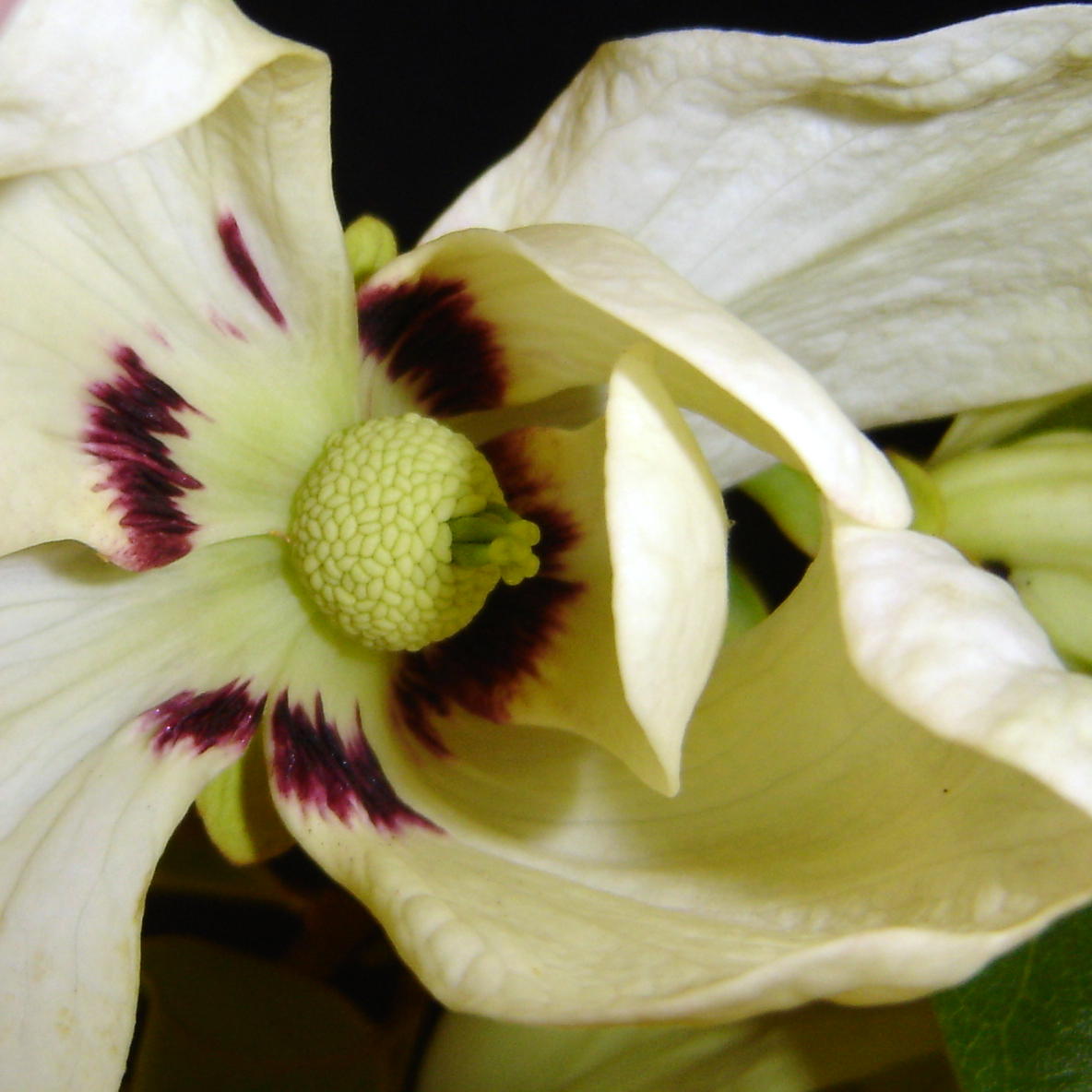
Asimina obovata
.jpg)
Guatteria sp.
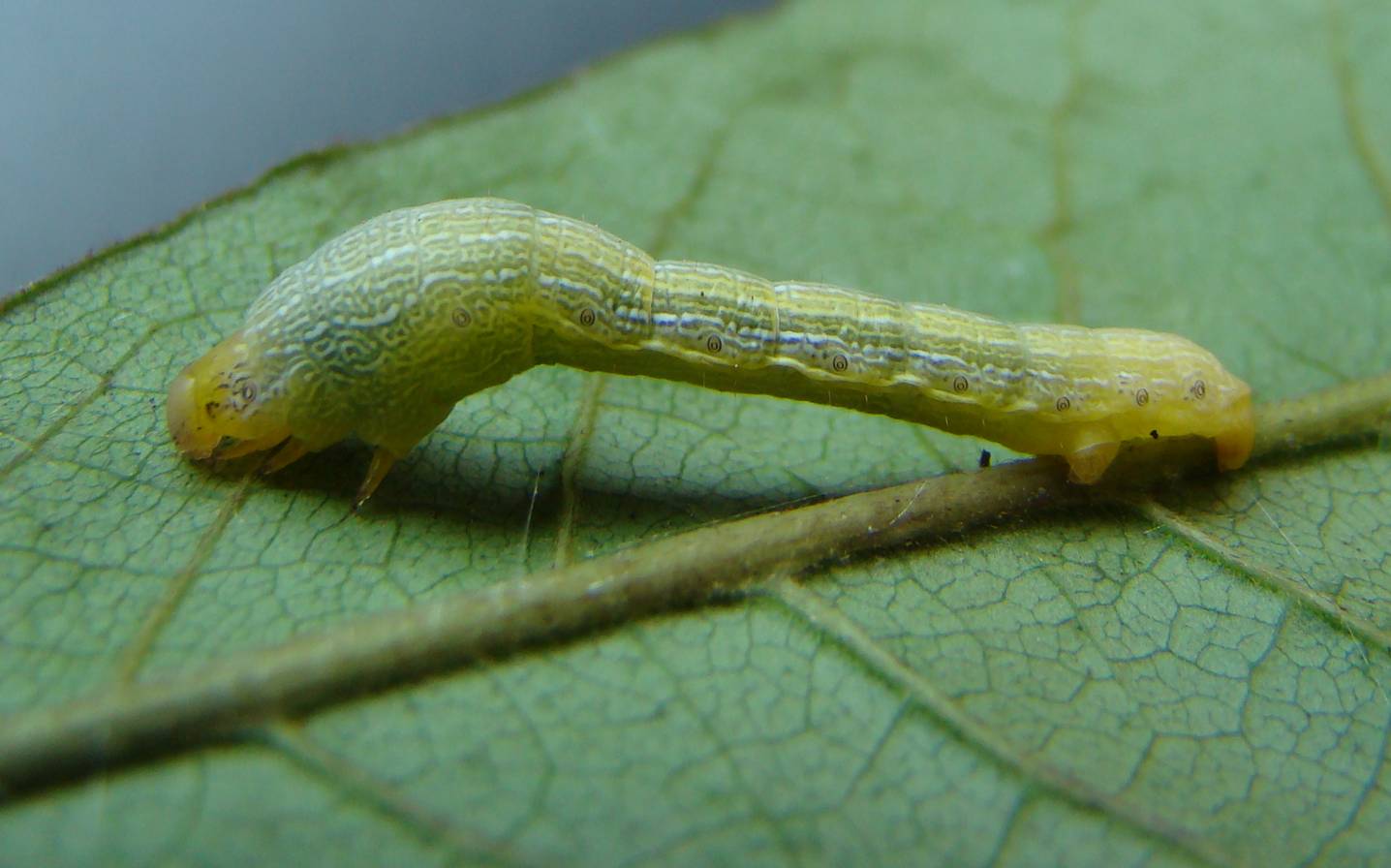
Epimecis hortaria
photo courtesy of J. Krumm
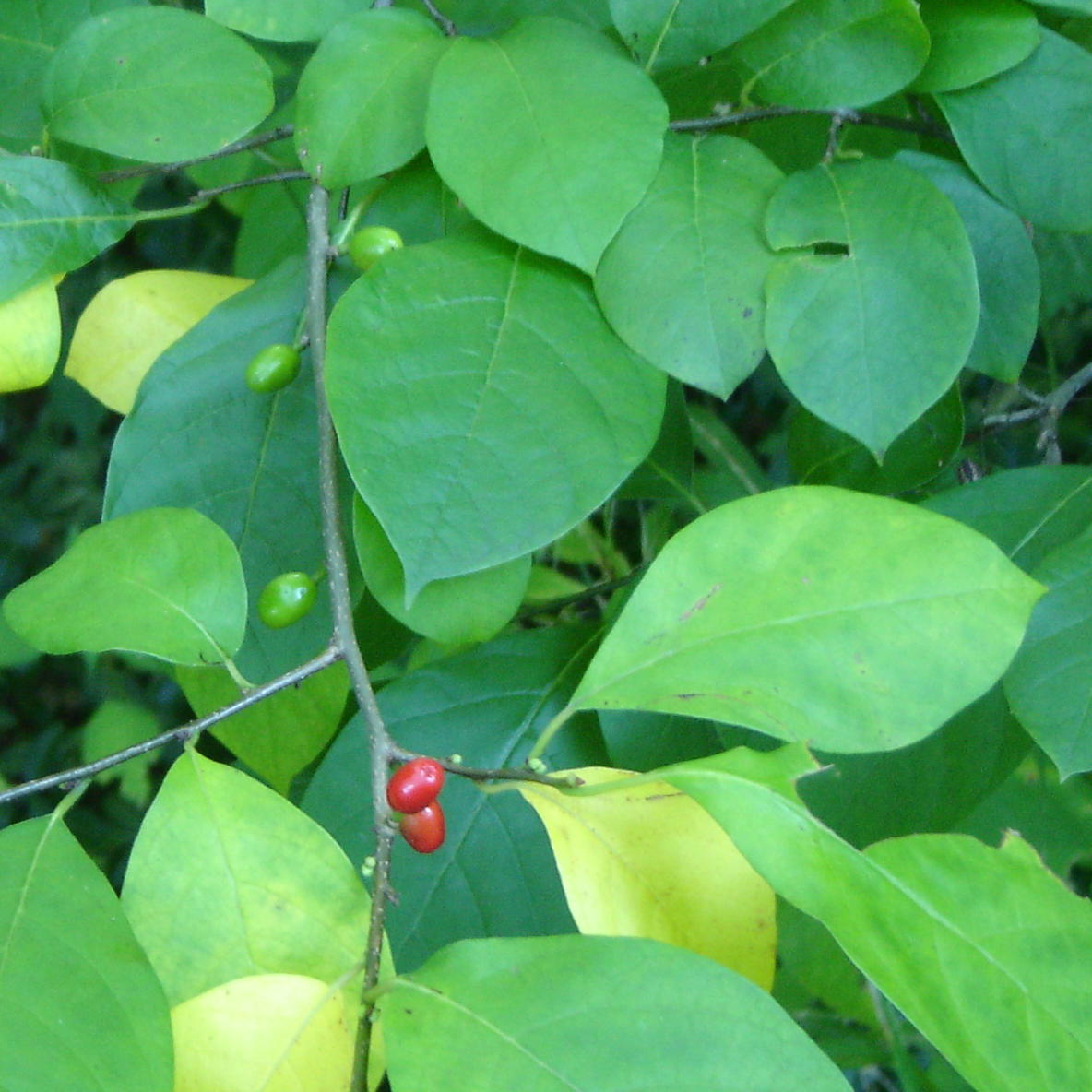
Lindera benzoin
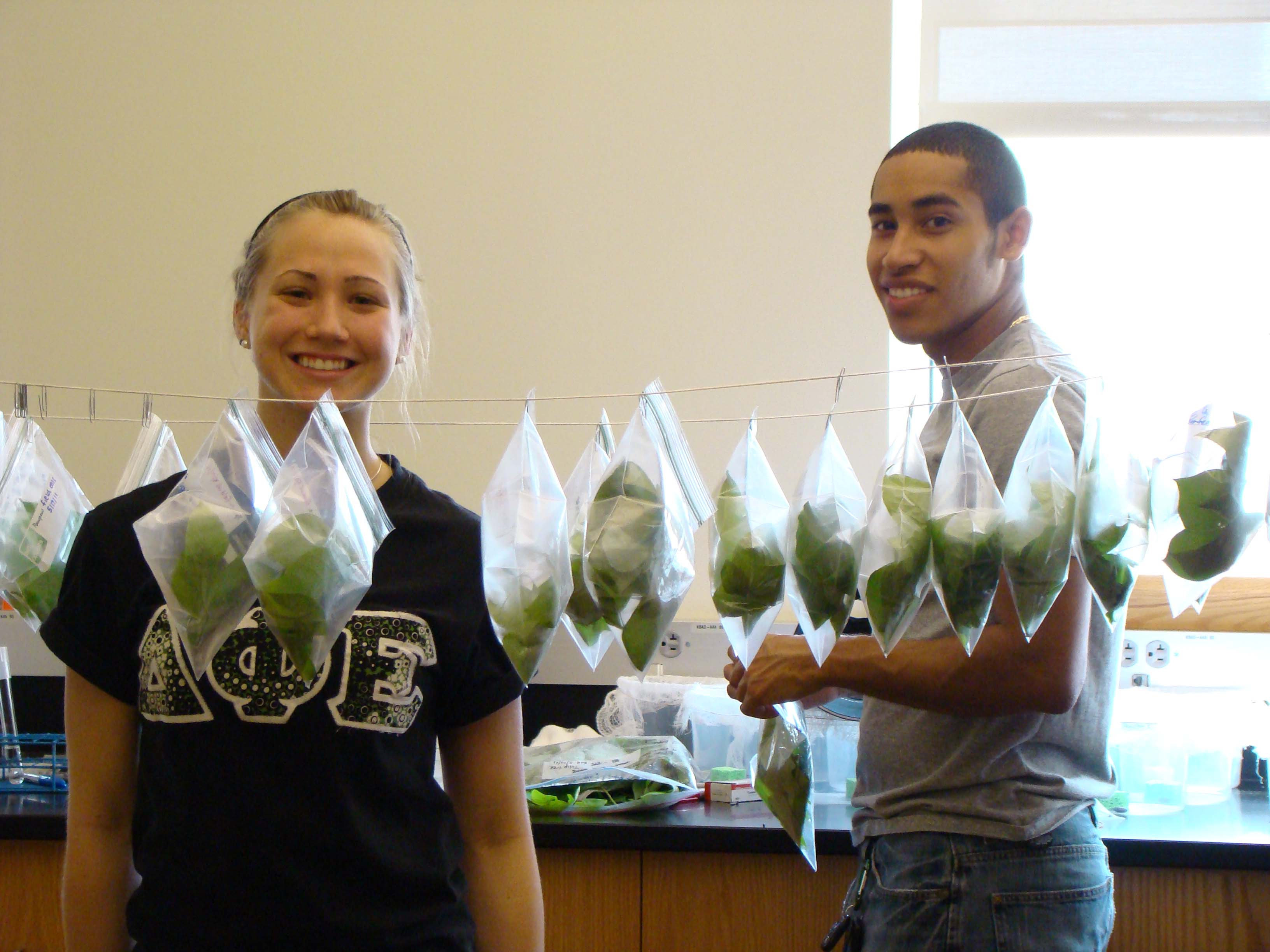
Summer research students Kelsey Fisher ('13) and Luis Ortiz ('13)
photo courtesy of J. Krumm
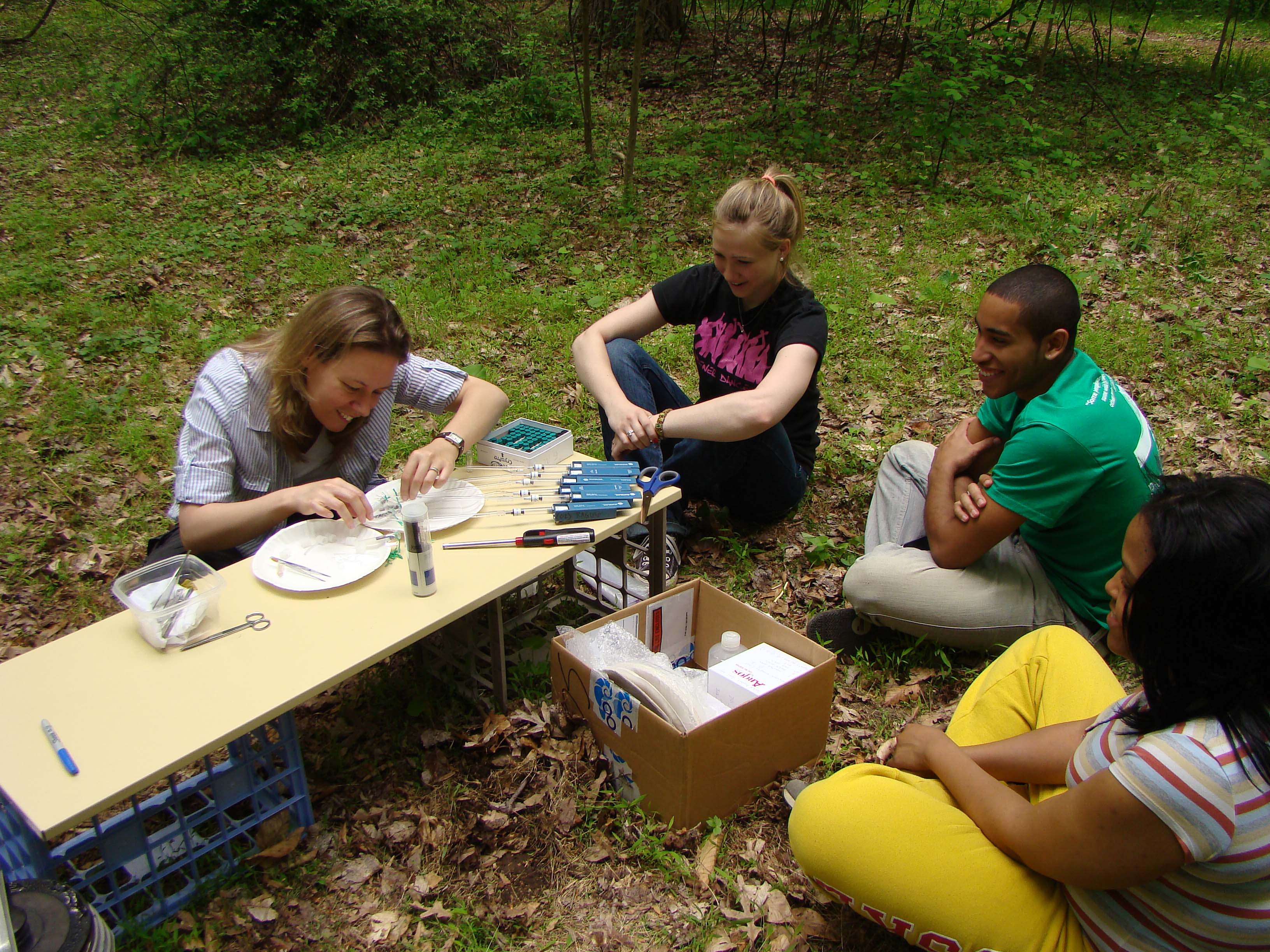
Scent research in the field (spring 2011)
photo courtesy of J. Krumm
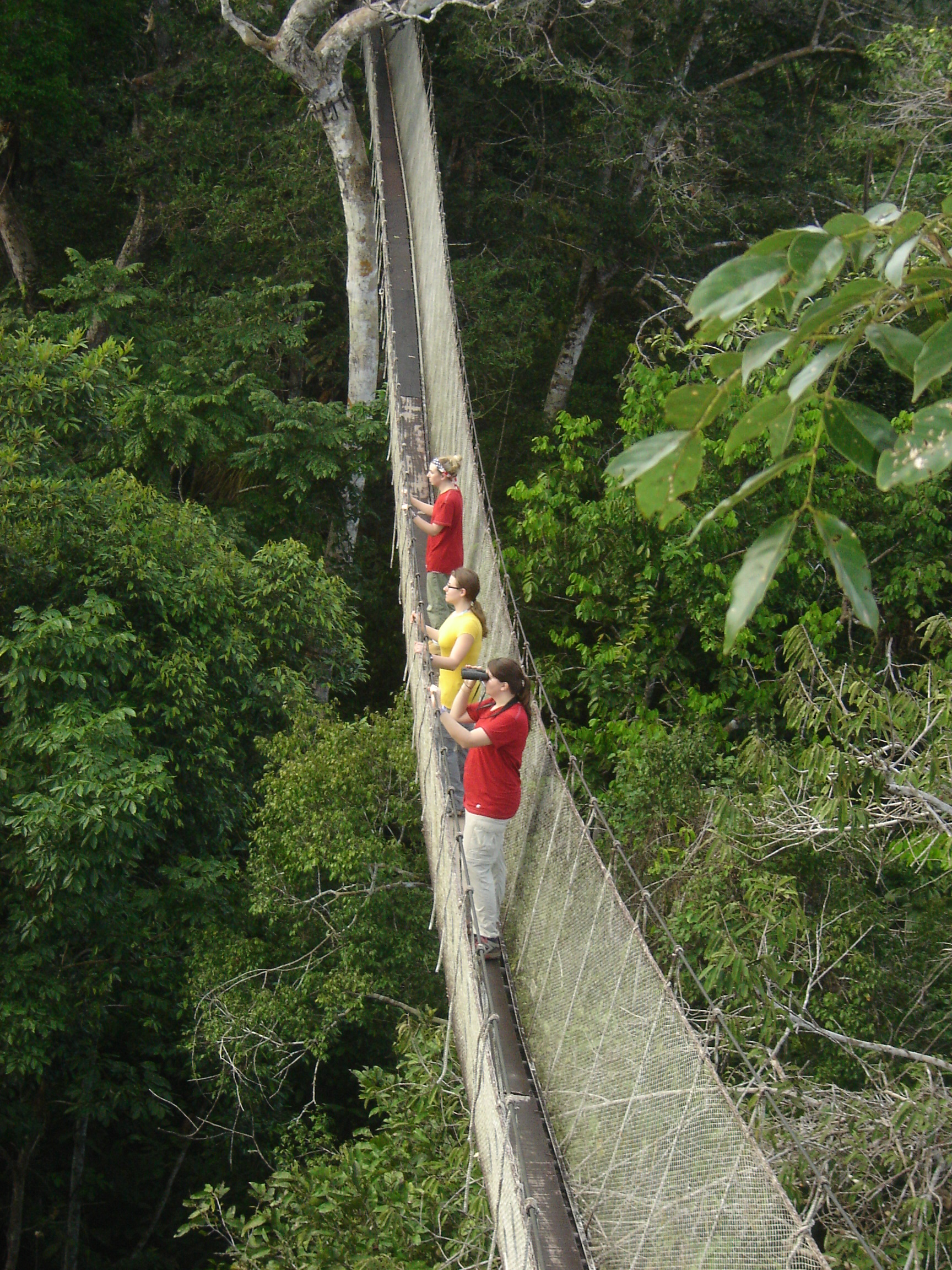
Widener students on canopy walk, ACTS field station, Peru
